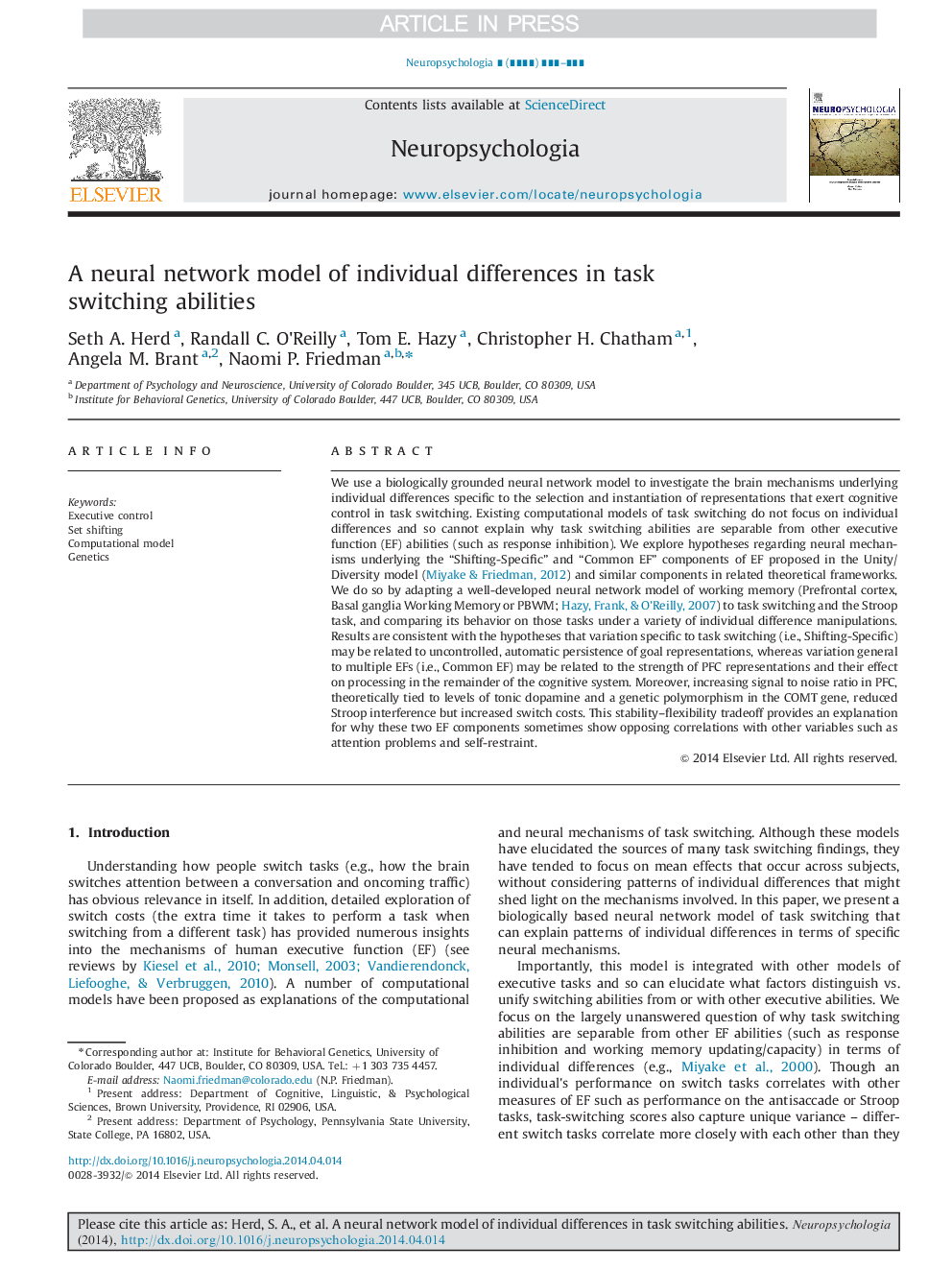| کد مقاله | کد نشریه | سال انتشار | مقاله انگلیسی | نسخه تمام متن |
|---|---|---|---|---|
| 7320966 | 1475591 | 2014 | 15 صفحه PDF | دانلود رایگان |
عنوان انگلیسی مقاله ISI
A neural network model of individual differences in task switching abilities
ترجمه فارسی عنوان
مدل شبکه عصبی از تفاوت های فردی در توانایی های سوئیچینگ کار
دانلود مقاله + سفارش ترجمه
دانلود مقاله ISI انگلیسی
رایگان برای ایرانیان
کلمات کلیدی
کنترل اجرایی، تنظیم تغییر، مدل محاسباتی، ژنتیک،
موضوعات مرتبط
علوم زیستی و بیوفناوری
علم عصب شناسی
علوم اعصاب رفتاری
چکیده انگلیسی
We use a biologically grounded neural network model to investigate the brain mechanisms underlying individual differences specific to the selection and instantiation of representations that exert cognitive control in task switching. Existing computational models of task switching do not focus on individual differences and so cannot explain why task switching abilities are separable from other executive function (EF) abilities (such as response inhibition). We explore hypotheses regarding neural mechanisms underlying the “Shifting-Specific” and “Common EF” components of EF proposed in the Unity/Diversity model (Miyake & Friedman, 2012) and similar components in related theoretical frameworks. We do so by adapting a well-developed neural network model of working memory (Prefrontal cortex, Basal ganglia Working Memory or PBWM; Hazy, Frank, & O'Reilly, 2007) to task switching and the Stroop task, and comparing its behavior on those tasks under a variety of individual difference manipulations. Results are consistent with the hypotheses that variation specific to task switching (i.e., Shifting-Specific) may be related to uncontrolled, automatic persistence of goal representations, whereas variation general to multiple EFs (i.e., Common EF) may be related to the strength of PFC representations and their effect on processing in the remainder of the cognitive system. Moreover, increasing signal to noise ratio in PFC, theoretically tied to levels of tonic dopamine and a genetic polymorphism in the COMT gene, reduced Stroop interference but increased switch costs. This stability-flexibility tradeoff provides an explanation for why these two EF components sometimes show opposing correlations with other variables such as attention problems and self-restraint.
ناشر
Database: Elsevier - ScienceDirect (ساینس دایرکت)
Journal: Neuropsychologia - Volume 62, September 2014, Pages 375-389
Journal: Neuropsychologia - Volume 62, September 2014, Pages 375-389
نویسندگان
Seth A. Herd, Randall C. O׳Reilly, Tom E. Hazy, Christopher H. Chatham, Angela M. Brant, Naomi P. Friedman,
